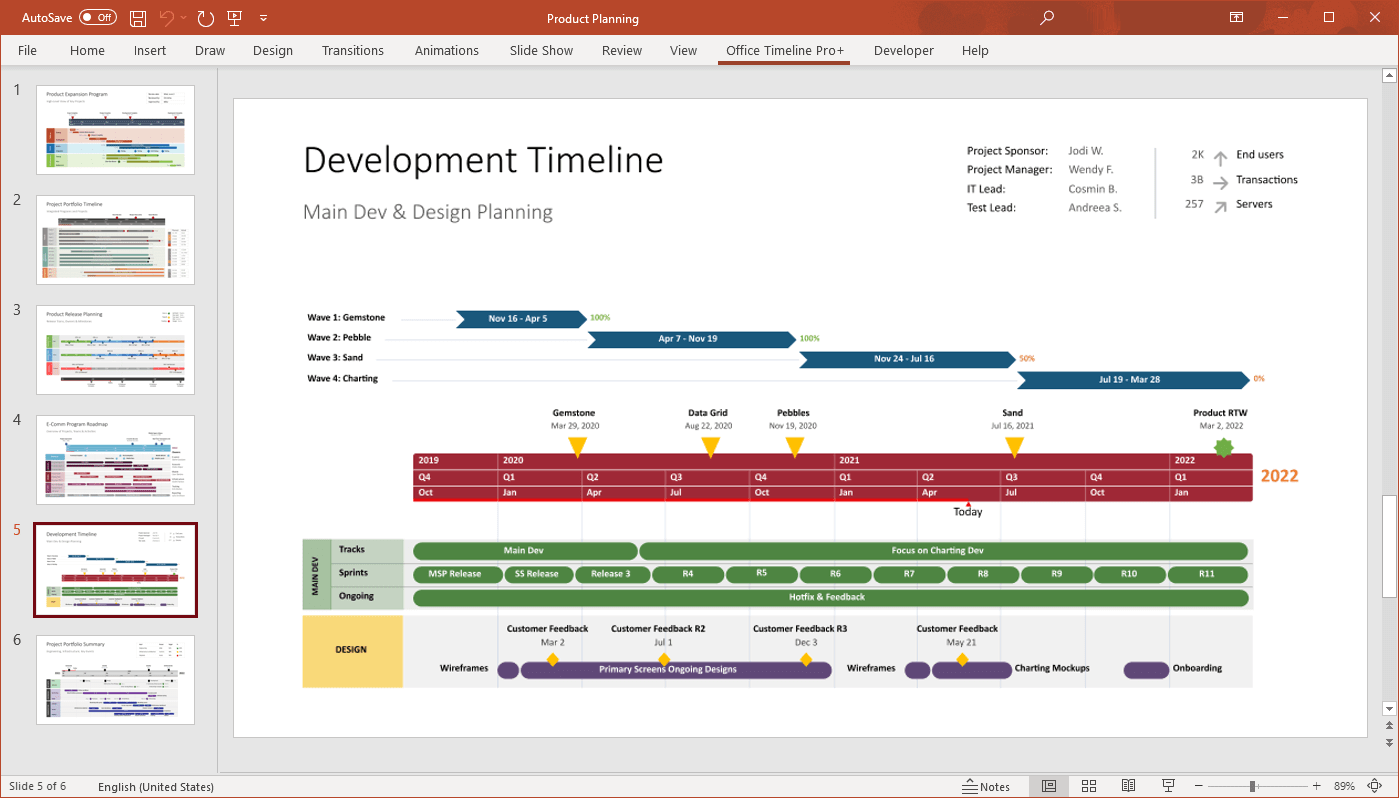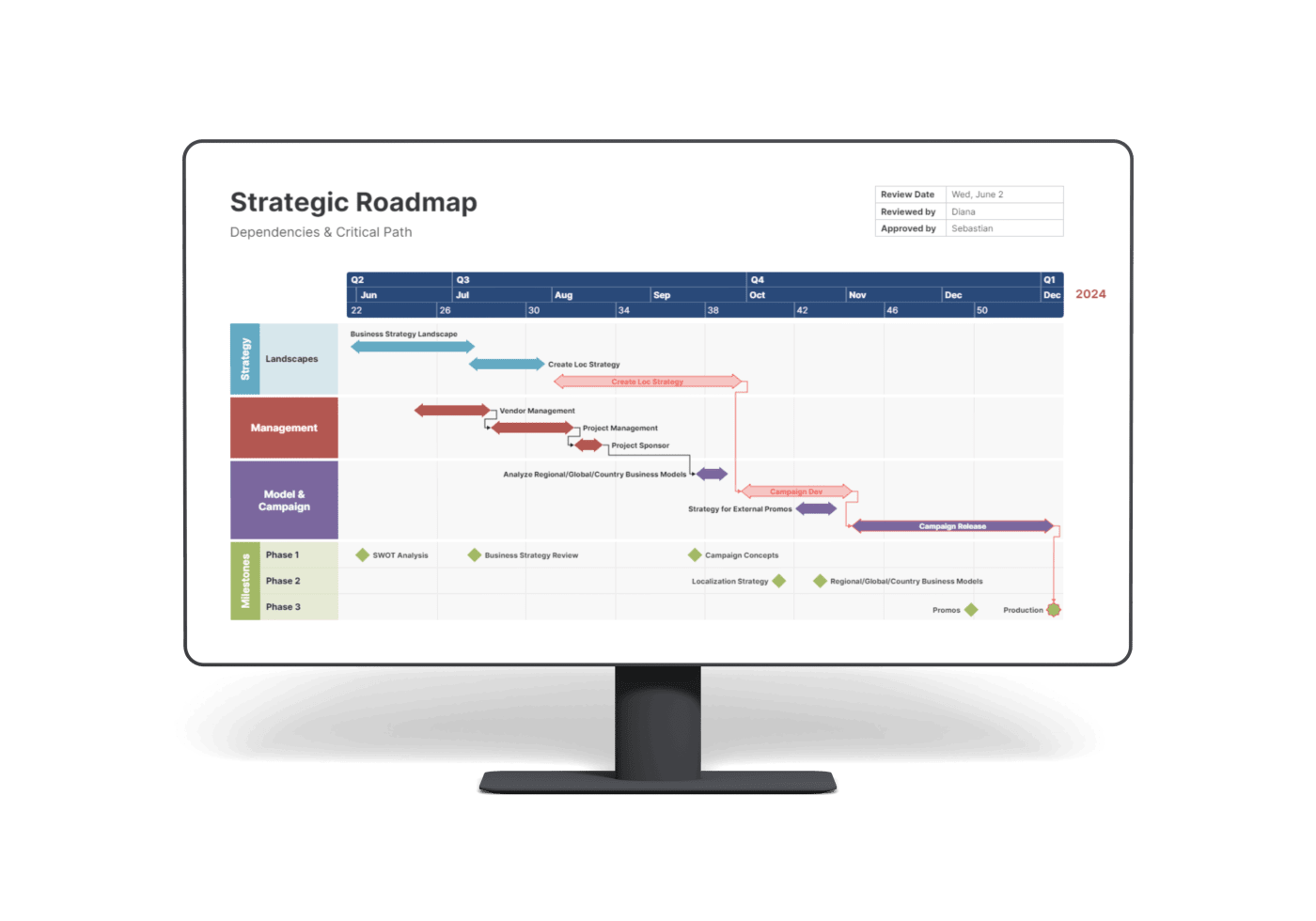
Visual Project Management Explained
Visualizing tasks and schedules to better communicate project plans
A vital aspect of effective project management resides in communicating clearly with teams and stakeholders about the big picture and specifics of your project. This ensures that everyone involved understands how each task and its timely completion contributes to the success of the overall initiative. One of the best ways to communicate with key participants is through visual project management.
What is visual Project Management?
Visual project management represents the method of organizing and managing processes over traditional projects through the use of visual tools such as timelines, Gantt charts, roadmaps and swimlane diagrams. These types of project management graphics help you deliver information in such a way that it can be consumed at a time, place, and manner that is convenient to anyone.
Why is visual project management important?
In today’s fast-paced and lean business culture, representing complex data in an easy-to-understand format and simplifying processes is of essence. At any given time, project managers have to capture, process, and communicate numerous distinct project data points such as task lists, operational expenses, calendars, performance metrics, and many more.
As the speed of business keeps increasing so does the number of data points required to maintain project execution in control. Based on these circumstances, executives need innovative visual project management tools to turn all the complex information into a comprehensible output that will allow them to make efficient long-term decisions. This is why project management has rapidly moved away from heavy-documented, lengthy project status reports and other related artifacts towards data visualization and more agile project management practices.
It is against this background that visual project management has emerged as one of the best ways to manage and lead projects, making voluminous details available under the form of simple, effective communication tools. This, in turn, provides project managers, team members, and key stakeholders with the following key benefits:
What are different types of project management charts?
Within the busy discipline that project management is, data visualization through project management charts becomes vital for effectively structuring underlying activities such as task management, project planning, team collaboration, resource allocation, and progress tracking.
Displaying project-related information in a clear graphical layout, project management charts help business professionals to better explain, forecast, report on, and organize an initiative. Making information easier to interpret and apply, these visual tools ensure a solid support for:
Project management charts come in various shapes and sizes, each of them having its own set of advantages and characteristics that make it suitable for a particular situation.
Here are the most well-known types of charts used in project management:
Learn more about the format and purpose of each of these project visuals on our dedicated project management charts page.
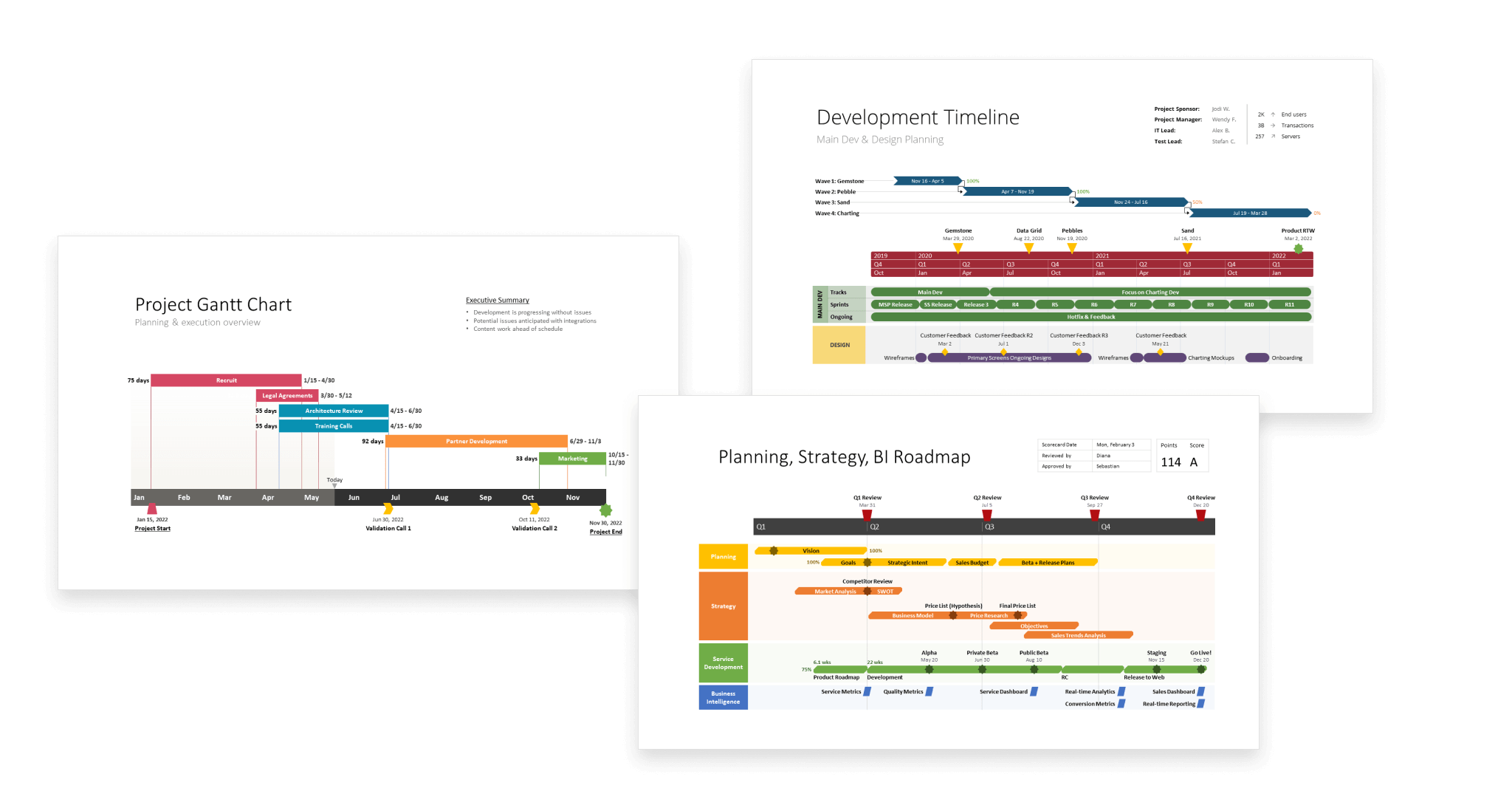
PROJECT MANAGEMENT CHARTS
Why should I use visual project management tools?
Created as an alternative to text-based project management solutions, visual project management tools are designed to help users visualize processes and workflows, thus contributing to improved planning, communication, and collaboration.
Providing clear visual representations of resources and tasks as the project advances, visual project management tools help resolve:
Using visual project management tools will not only allow you to stay organized and make more informed decisions during every phase of the project, but also to:
The best visual project management tools should be easy-to-master, but powerful enough to meet the requirements of a professional project manager. Here are some of the must-have features to look for in your visual PM solution:
For more resources on how to choose the software option most suitable to your needs, check out our review of the 8 best visual project management tools on the market.
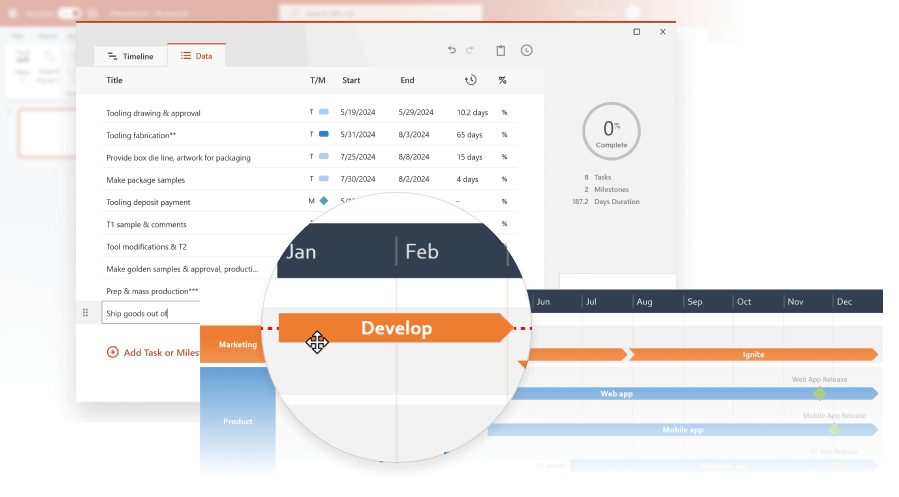
VISUAL PROJECT MANAGEMENT TOOLS
What is Agile project management and who uses it?
Given the diverse and dynamic nature of modern project management, Agile has emerged as the iterative, flexible, and customer-centric approach to planning and executing projects. Focusing on continuous improvement, Agile project management was designed to help teams be more responsive to feedback and external changes so that they could provide the highest value throughout the project duration.
Agile project management relies on a system that has the project broken down into several short-term work cycles known as sprints. At the end of each sprint, the completed work is assessed and feedback is given. Teams will then implement this feedback in the following sprint, thus continuously building on and improving their previous efforts.
The main advantage of Agile PM is that it helps organizations plan and undertake projects in an adaptable manner so that deliverables still be relevant to the progressively emerging technologies and changing customer preferences.
Originally developed for software development, Agile project management has expanded its influence on other areas as well, proving to be a popular alternative to milestone-driven work in general. Over the years, industries like financial services, IT, human resources, and marketing have embraced this framework to accomplish their goals.
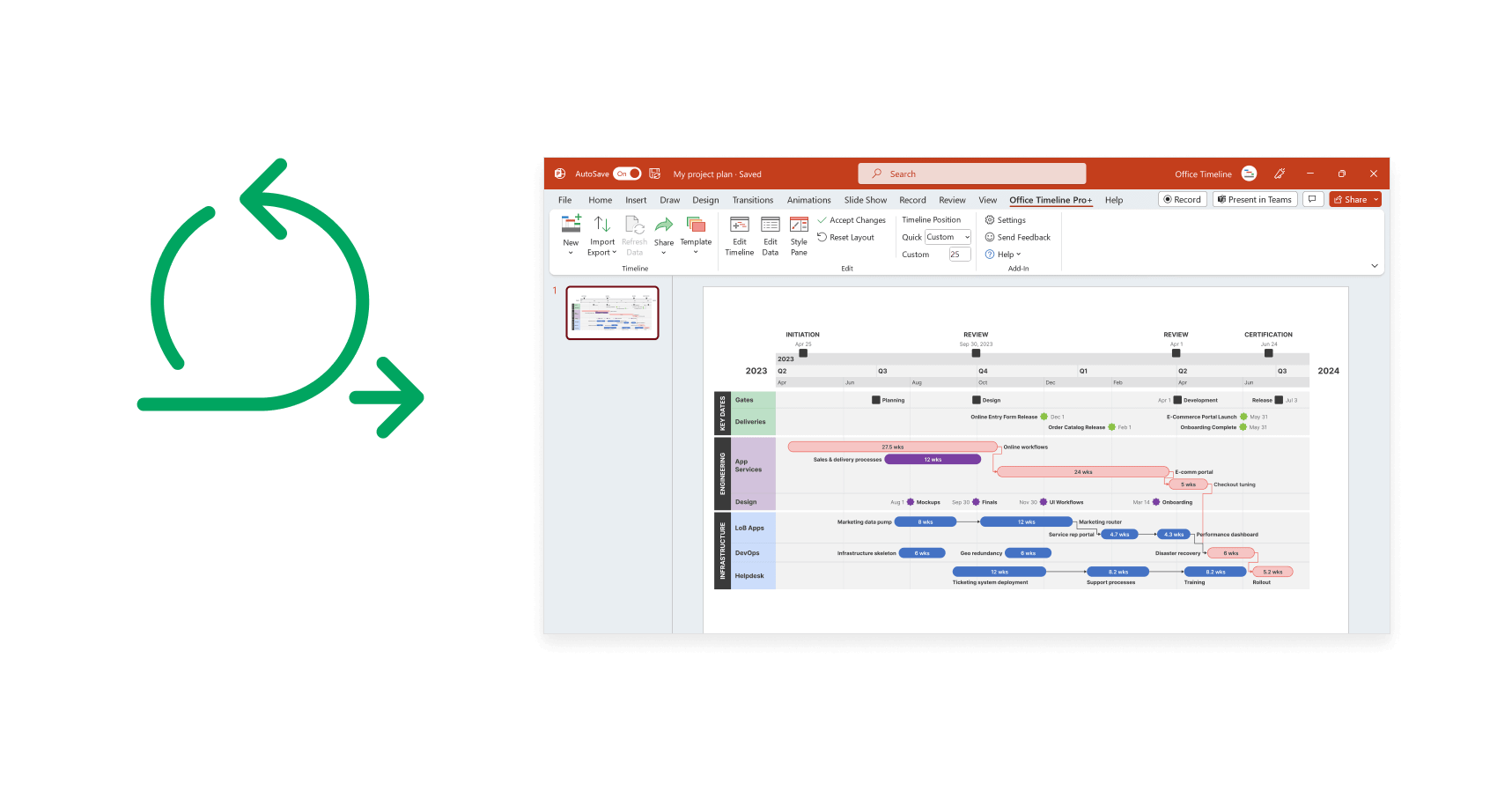
AGILE PROJECT MANAGEMENT
How to do project management in Excel
Although not marketed as a project planner, Microsoft Excel is often used in project tracking. The spreadsheet platform may not satisfy all project management needs but it does offer a few powerful tools in this respect. To help you decide whether it can work for you, we will summarize below the main things you need to know about project management in Excel.
When to use Excel for project management?
Given that modern project management favors data visualization, Microsoft Excel may seem like an unsuitable option for related activities. While the spreadsheet platform might lack the advanced functions that enable one to properly execute daily tasks, it can however be helpful for managing simple project plans. Sometimes, less is more.
Here are a few cases when Excel can be a better alternative to expensive, dedicated visual project management tools:
You work by yourself or in a small team – if you are, let’s say, an entrepreneur or part of a small contractor firm, you won’t be needing platforms loaded with features or geared towards corporate use.
You aim for a simple output – even with the easiest-to-use software you will still face a learning curve, while Excel is straightforward in terms of the format in which to organize data. Simply enter and highlight data points such as task lists, due dates, man hours, or what other project-based details you want to record in the spreadsheet.
You want to save money – quality visual PM tools may prove quite expensive on the long run, especially if you need to be watchful of your project budget and expenses. So, if Excel meets your project tracking needs, then choosing the spreadsheet platform over paid specialized software saves you a good amount of money.
Best use cases for Excel project management
As said earlier, Excel might not be equipped with state-of-the-art visualization tools, but it provides efficient functions and templates that will help you handle tasks related to mapping out the project scope, budgeting, and tracking daily activities.
Here are a few cases in which Excel templates can help:
Timelines – Excel lets you create a visual timeline chart to outline a simple project schedule and its phases.
Project budget plans – thriving when it comes to crunching numbers, Excel is suited for creating project budgets that track a simple list of expenses against one of income for small to mid-sized companies.
Task lists – the spreadsheet format will lend itself well to the creation of to-do lists that show the description of each task to be accomplished, necessary resources, assigned employee/team member, and so on.
Learn more about how Excel can serve your project planning needs and discover a varied range of Excel templates that you can easily customize by going to our page on project management in Excel.
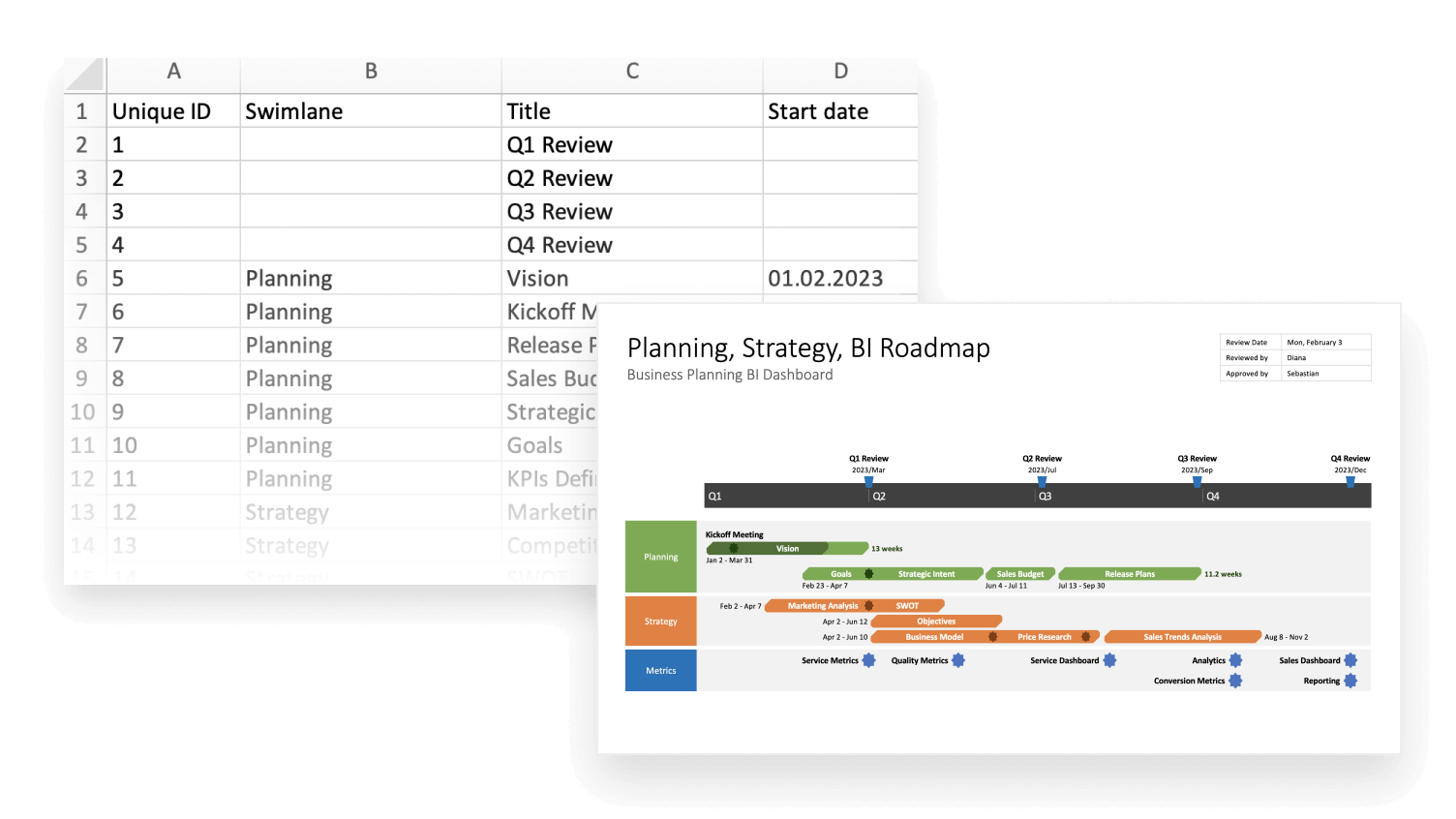
PROJECT MANAGEMENT IN EXCEL
Best visual project management templates
Governed by the imperative of time efficiency, planning and managing any business initiative will always benefit from using visual project management templates. Providing a reusable, pre-formatted project outline that you can populate with your own data, PM templates serve as a great starting point for new work, saving you time and efforts when setting up:
tasks,
dependencies,
timelines,
assignees,
workflows.
There are a variety of visual project management templates available, some of which come right inside well-known productivity tools such as Microsoft Project or Excel. However, the best project management templates that you can use are the customizable ones. Unlike most standard pre-built samples, where you need to modify the generic structure to include your company information and other specific details whenever creating a new project plan, a customizable template enables you to simply adjust the layout and placeholder data to suit your particular project’s needs and save it for future use.
Now it is essential to choose a customizable visual project management template that is flexible enough to support different requirements and work styles. This will not only allow users to produce individual views that highlight the information each of them finds relevant, but also ensure that everyone starts with a common basis for structuring critical data.
To help you kick off your project, effectively align goals and priorities with team members and stakeholders, and successfully set up a formal model to keep recurring work consistent, we have put together a collection of professionally designed visual project management templates that you can easily customize.
Excel and PowerPoint templates for project management
Visit our project management templates page to get access to more free, customizable templates that help you effectively visualize and organize your project plans. You can explore and download the most common Project Management templates as Excel and PowerPoint files, such as:
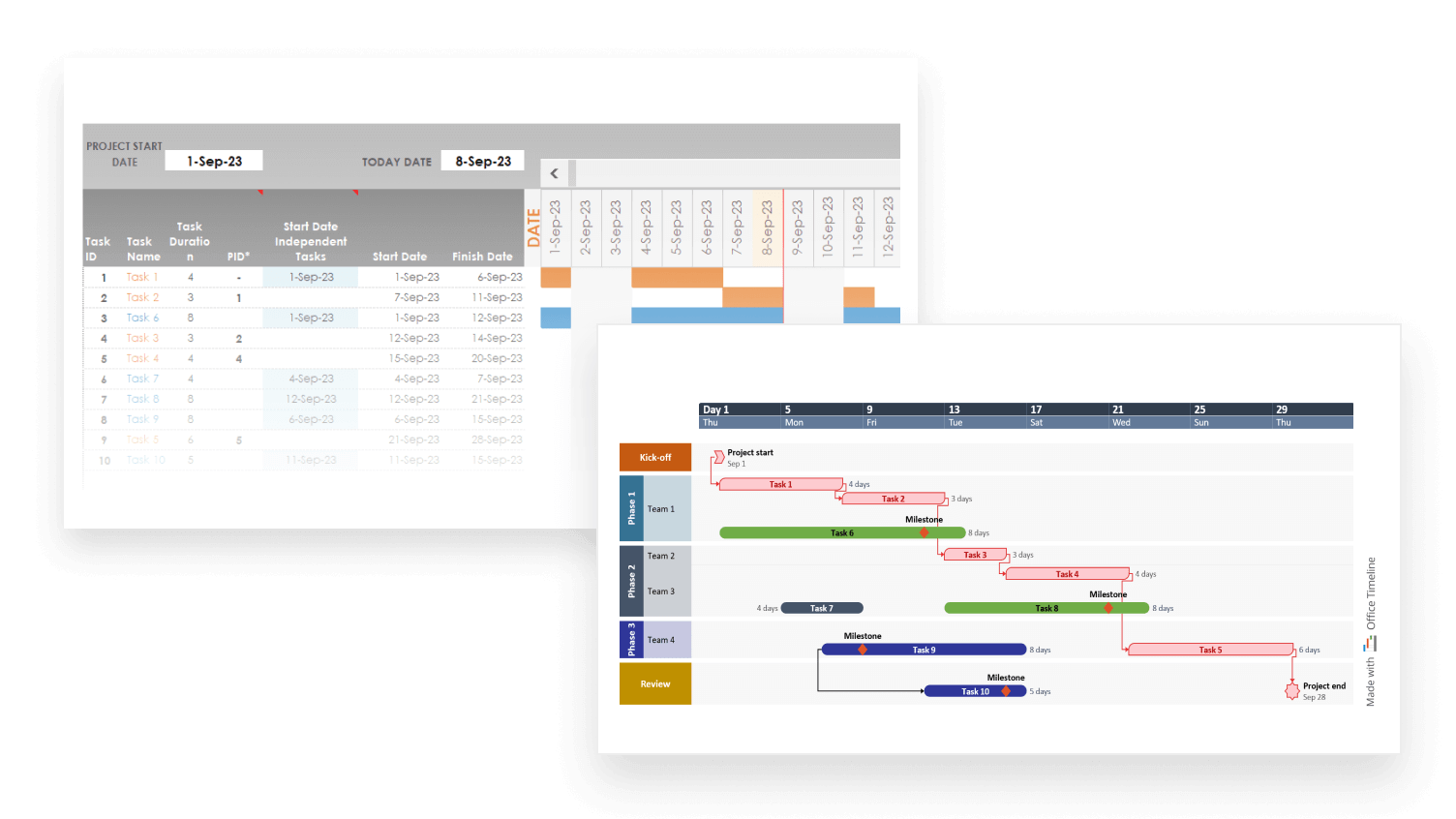
PROJECT MANAGEMENT TEMPLATES
Frequently asked questions about project management
In this section, we provide the answers to the most common questions about visual project management.
What is visual project management?
Visual project management is the practice of using illustrations and diagrams to represent complex data or to simplify processes, so it is easier for businesses and their employees to plan, execute and control projects.
Why are visuals important in project management?
Using visuals in project management is important because it helps convey complex data in an easy-to-understand format and streamlines project information flow among concerned parties. This in turn ensures:
visibility, clarity, and transparency around the project’s scope and underlying processes;
time efficiency in making essential project details accessible to everyone;
better understanding of what needs to be done, project progress, potential roadblocks, and risks;
increased team productivity and enhanced collaboration.
How do you visually organize a project?
What is a visual representation of a project?
A visual representation of a project is any illustration of the tasks and objectives involved in the respective initiative. These graphical representations are called project management charts and their format can range from timelines and Gantt charts to Kanban boards, roadmaps, swimlane charts, and many others.
What is data visualization in project management?
In project management, data visualization is the technique of converting complex project information into a visual or graphical representation that makes it easier to understand, process, analyze, and communicate.
To try out various visualization formats for your project data, see our collection of visual project management templates that you can easily download and customize.














